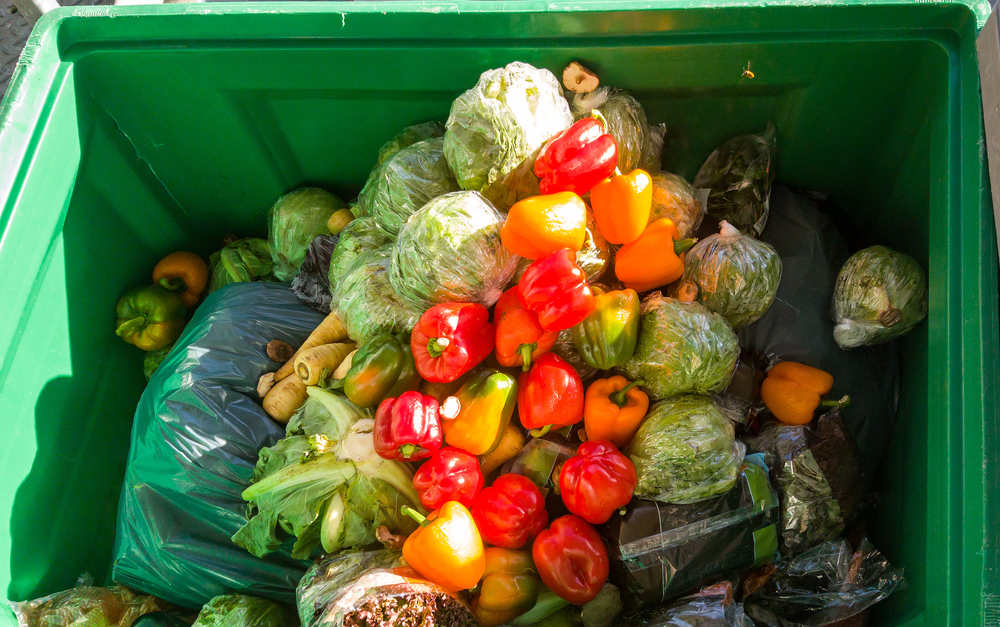Restaurants are working hard to lessen their negative impact on the planet. Whether it be purchasing energy-efficient equipment, switching to eco-friendly take-out containers, or investing in sustainable dinnerware, they’re altering their strategies to make a difference. However, most restaurants aren’t addressing one of the biggest problems currently in place: food waste. The massive amount of food being thrown out each year is becoming a major environmental concern. This blog will go over how restaurants can minimize food waste and why it’s such a big problem.
The Restaurant Food Waste Problem
Approximately 1.3 billion tons of food is wasted yearly around the globe. This is one-third of food meant for human use gone to waste. According to the National Resources Defense Council, Americans waste 40% of their food. While residential, industrial, and grocery store food waste make up for a little more than 50% of the 80 billion pounds of food waste that ends up in landfills, restaurant food makes up 37% and institutional facilities such as hotels and schools are responsible for another 11%. Because restaurants and institutions make up more than 45% of the United States food waste, their participation in the effort to reduce food waste is essential.
The wasted food that degrades in a landfill releases methane, a greenhouse gas which greatly contributes to global warming. By practicing more responsible food waste management in restaurants, we can significantly reduce the rate of global warming the plant is experiencing. While practicing responsible food waste management methods may seem like a daunting task, it might be easier than you think!
Ways to Minimize Restaurant Food Waste
1. Reduce Waste From the Source
Source reduction is one of the best ways to prevent waste from ever being created. Purchasing more food than you need to ensure you don’t run out of an ingredient often results in purchasing food you won’t be able to use. This is a waste of both food and money. To help avoid buying more ingredients than you need, you should keep track of what currently gets thrown away. Use your records to adjust your next order to an amount you’re most likely to use. If you find yourself with a surplus of ingredients, you can try to use it all up before it expires by creating a special menu item.
You can also reduce the amount of food wasted by keeping track of what customers order versus what actually gets eaten. You might find that certain side items aren’t very popular or the portion sizes of some entrees are too large. Use the data you gather to alter your menu and decrease the amount of food waste created.

2. Feed the Hungry
What is the goal of a restaurant? To feed hungry people. But it shouldn’t just be for those that pay for it. Restaurants should be encouraged to serve meals to food-insecure individuals and families. Many restaurants hesitate to donate food in the fear of legal issues that may arise. However, acts such as the Good Samaritan Food Donation Act provides protection for those making food and grocery donations. Restaurants should get in touch with food banks and nonprofit organizations in their area to find out what they need, what they can donate, and how the donation will be received. An added benefit is that your donations might also be tax-deductible!
3. Feed the Animals
After feeding the people, you can use food scraps and leftovers to feed animals. The legalities of this option vary from state to state, so you’ll need to ensure that you’re complying with the requirements and guidelines your state has in place. It is recommended that you contact your local agricultural or public health agency to find out more about this option in your area.
4. Compost
The last method for reducing food wastes to use for compost. This has become an increasingly popular way of dealing with food that doesn’t get eaten by humans or animals. When it comes to composting, it’s important that you know what is and isn’t compostable. For example, things often found in kitchens—such as limes, meat, grease, and oils— aren’t ideal for composting. Examples of things are ideal for composting include:
- Fruits
- Vegetables
- Dairy Products
- Grains
- Bread
- Coffee grounds and filters
- Eggshells
- Nutshells
US restaurants generate an estimated 22 to 33 billion pounds of food waste each year. Food waste isn’t just a humanitarian concern—it’s an environmental one! When we waste food, we also waste the water and energy that goes into growing, harvesting, transporting, and packaging it. When the food goes to the landfill, it rots and produces methane. Fortunately, reducing the amount of food that gets wasted in restaurants could significantly reduce the damage. We hope this blog helps you see how your restaurants can minimize food waste. Whether it be minimizing the amount of food waste in your restaurant, or promoting the use of sustainable agriculture, we can all do something to change the world. If you’re looking for a way to positively impact the world, Aceneca would love to hear more about you!
